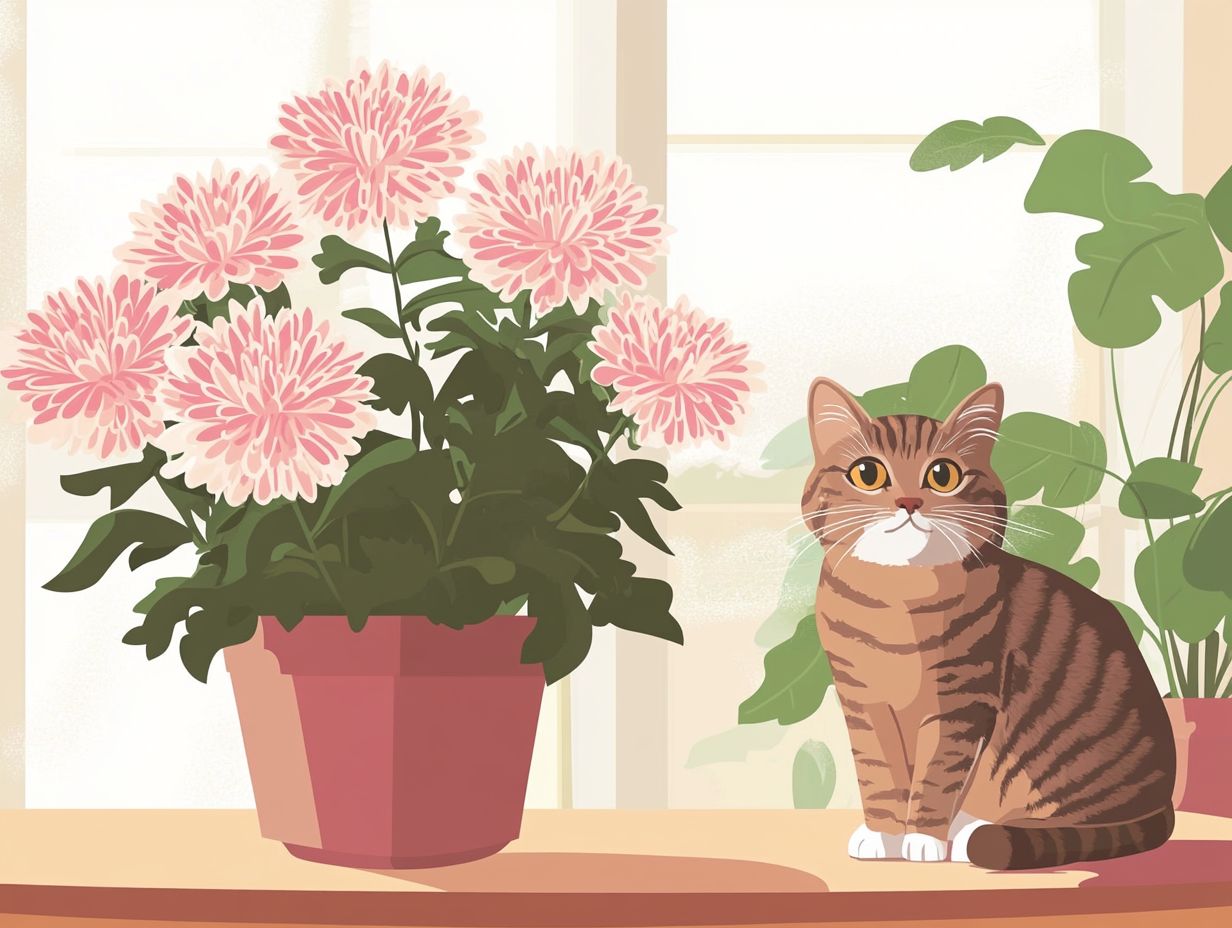Chrysanthemums, commonly known as mums, are toxic to cats, particularly their leaves, flowers, and stems. These vibrant flowers present health risks that can range from mild to severe. While they are a popular choice for gardens and floral arrangements, understanding the potential toxicity is crucial for ensuring flower safety in your home.
If you’re a cat owner, you may be wondering about their safety. Are these beautiful flowers harmless, or do they pose a risk to your curious kitty? This article explores the dangers of chrysanthemums for cats, the toxic components involved, symptoms of poisoning, and essential steps to keep your cat safe. For more information on plant toxicity, consult reputable sources such as the ASPCA Animal Poison Control or veterinary journals.
Read on to ensure your home remains a haven for your furry companion, with tips on maintaining a pet-friendly environment.
Key Takeaways:

- Keep chrysanthemums away from cats as they can be toxic.
- If a cat ingests chrysanthemums, contact a veterinarian or the Pet Poison Helpline immediately and monitor symptoms.
- Avoid planting chrysanthemums in your garden and consider non-toxic plant alternatives.
What Are Chrysanthemums?
Chrysanthemums, or mums, are vibrant flowering plants commonly used in floral arrangements. Though they are generally non-toxic to humans, cat owners should be aware of the risks these plants pose to their pets. Understanding chrysanthemum characteristics can help create a cat-friendly environment.
Are Chrysanthemums Safe for Cats?
Chrysanthemums are considered toxic to cats. The ASPCA highlights that ingestion can lead to toxicity symptoms like skin irritation and neurological signs. Implementing a cat-proofing strategy is essential to mitigate risks.
Toxicity Information
Chrysanthemums contain compounds such as pyrethrins and sesquiterpene lactones, which are harmful to cats. These compounds can cause severe reactions, emphasizing the need for careful handling and awareness among pet owners.
Symptoms of Chrysanthemum Poisoning
Chrysanthemum poisoning in cats can lead to a range of symptoms:
- Mild Symptoms: Vomiting, diarrhea
- Moderate Symptoms: Lethargy, loss of appetite
- Severe Symptoms: Skin irritation, neurological symptoms
First Aid for Cat Poisoning
In case of chrysanthemum ingestion, follow these steps:
- Stay calm and assess your cat’s condition.
- Contact your veterinarian or the ASPCA Animal Poison Control immediately.
- Remove any remaining plant material if safe to do so.
- Monitor for symptoms like vomiting, lethargy, or diarrhea.
- Follow your veterinarian’s instructions carefully.
Prevention and Safety Measures
To prevent chrysanthemum poisoning:
- Keep chrysanthemums out of reach of pets.
- Avoid planting them in your garden.
- Consider using non-toxic plant alternatives.
- Educate yourself on plant safety.
Common Misconceptions
Many believe that all flowering plants are safe for pets; this is not true. All varieties of chrysanthemums can be harmful, underscoring the need for vigilance.
Risks for Specific Groups
Kittens, senior cats, and pets with pre-existing conditions may be more susceptible to the effects of chrysanthemum toxicity. Always exercise caution around these plants.
Expert Consultation and Disclaimer
Consult experts or veterinarians for personalized advice on plant safety in your home. This article is intended for informational purposes and should not replace professional medical advice.
Last reviewed: October 2023. This article will be updated regularly based on new research.
Emergency Contact: For immediate assistance, contact your veterinarian or the ASPCA Animal Poison Control at 1-888-426-4435. Responsible pet ownership includes being informed about the plants in your home.